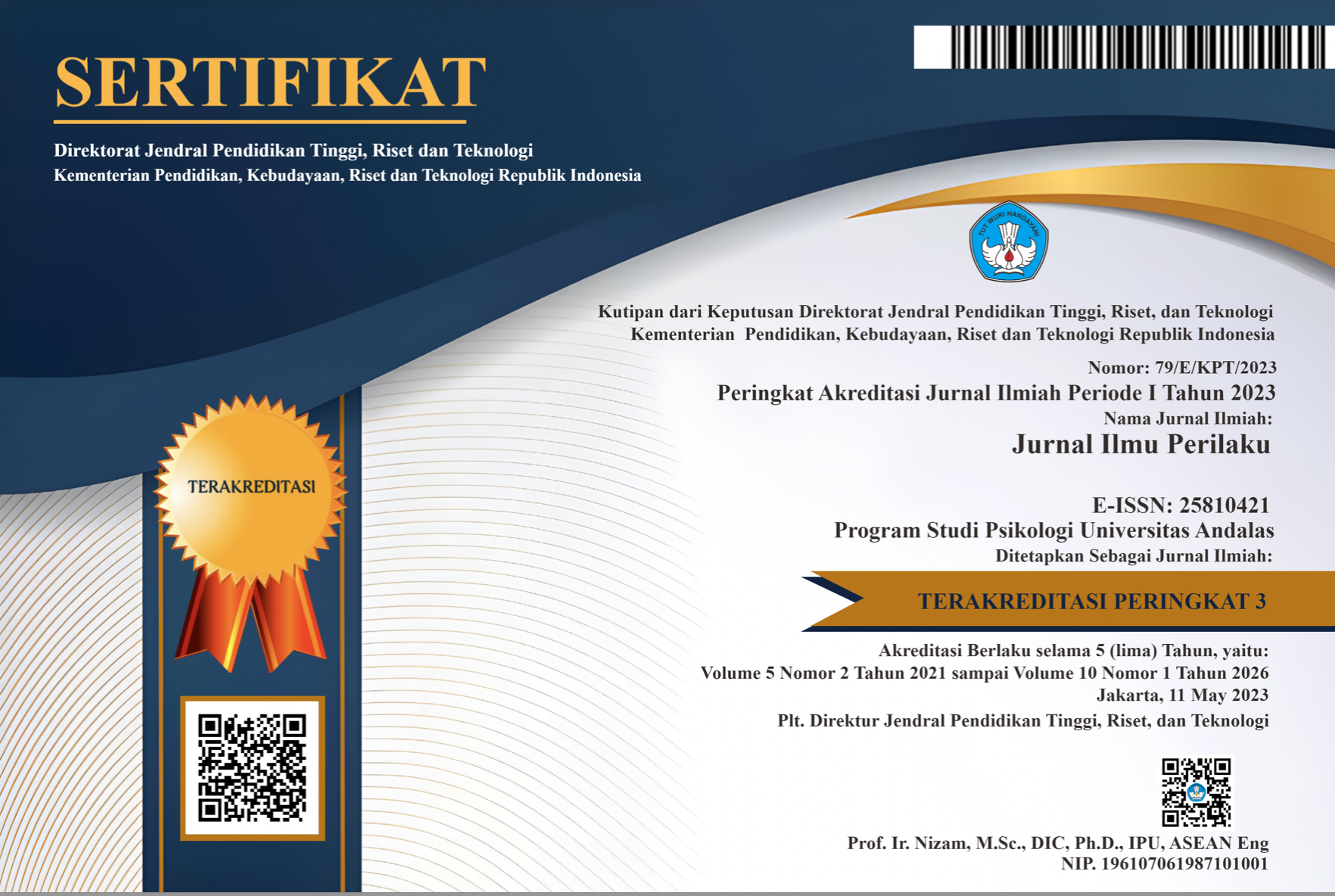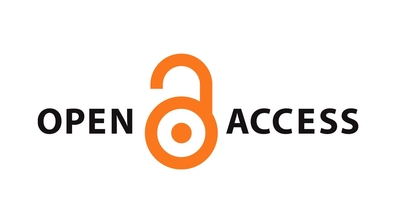Menelisik Perilaku PerundunganPada Siswa SMP Di Yogyakarta
Abstract
Abstrak. Dampak negatif dari perkembangan jaman dan modernisasi adalah melunturnya nilai-nilai luhur budaya. Salah satu bukti dari melunturnya nilai-nilai luhur budaya dapat dilihat dari banyaknya kasus bullying yang terjadi di lingkungan sekolah. Tujuan dari penelitian ini adalah untuk melakukan identifikasi dan asesmen perilaku bullying pada siswa SMP di Kota Yogyakarta. Variabel yang diteliti adalah perilaku bullying pada siswa SMP. Subjek penelitian ini adalah 107 siswa di SMP N Kota Yogyakarta. Metode pengumpulan data yang digunakan adalah skala intensitas perilaku bullying, FGD, dan observasi. Kesimpulan penelitian ini adalah telah terjadi perilaku bullying pada siswa SMP di Kota Yogyakarta. Perilaku bullying yang terjadi antara lain verbal, non verbal, dan fisik. Perilaku bullying terjadi karena adanya dinamika antara pelaku, korban, dan lingkungan. Teman sebaya memiliki peran yang sangat penting dalam terjadi perilaku bullying di sekolah. Teman sebaya yang negatif dapat menjadi pelaku maupun pendukung bullying, sedangkan teman sebaya yang positif dapat menjadi pembela korban maupun ujung tombak penanganan bullying di sekolah. Norma sosial di sekolah ditentukan oleh sikap teman sebaya terhadap bullying.
Kata kunci: bullying, siswa SMP, teman sebaya
Downloads
References
Balakrishnan, V. (2018). Actions, emotional reactions, and cyberbullying –From the lens of bullies, victims, bully-victims, and bystanders among Malaysian young adults. Telematics and Informatics 35(5), 1190-1200, doi: https://doi.org/10.1016/j.tele.2018.02.002
Ballerina, T. & Kumara, A. (2015). Fasilitator teman sebaya untuk menurunkan intensi perilaku bullyingpada siswa SMA. Tesis. Tidak diterbitkan. Fakultas Psikologi Universitas Gadjah Mada.
Berger, A., Karimpour, C., Rodkin, M (2008). Twenty years' research on peer victimizationand psychosocial maladjustment: A Meta-analytic review of cross-sectional studies. Journal of Child Psychology and Psychiatry. 41, 441-455.Chu, X.W., Fan, C.Y., Lian, S.L., & Zhou, Z.K. (2019). Does bullying victimization really influence adolescents’ psychosocial problems? A three-wave longitudinal study in China. Journal of Affective Disorders 246, 603-610, doi: https://doi.org/10.1016/j.jad.2018.12.103.
Enteenman, J., Murnen, T. J., & Hendricks, C. (2005). Victims, Bullies, and Bystanders in K-3 Literature. Journal of International Reading Association, 352-364.
Frey, K.S., Pearson, C.R., & Cohen, D. (2015). Revenge is seductive, if not sweet: Why friends matter for the prevention efforts. Journal of Applied Developmental Psychology 37, 25-35, doi: http://dx.doi.org/10.1016/j.appdev.2014.08.002
Frisen, A., Jonsson, A., & Persson, C. (2007). Adolescent’s perception of bullying: who is the victim? who is the bully? what can be done to stop bullying. Adolescence,42 (168), 749-761.
Guerra, N. G., Williamson, A., & Sadek, S. (2012). Youth perspectives on bullying in adolescence. The Prevention Researcher, 19(3),14-16.
Hardoko. (2015, 7 September). Niat Permalukan Kawannya di Medsos, Siswi SMP di Sumut Malah di Bully. Diakses pada 24 April 2017 dari http://regional.kompas.com/read/2015/09/07/20221301/Niat.Permalukan.Kawannya.di.Medsos.Siswi.SMP.di.Sumut.Malah.Di-.Bully.?page=1
Hong, J. S., & Espelage, D. L. (2012). A Review of Research on Bullying and Peer Victimization in School: An Ecological System Analysis. Journal of Aggression and Violent Behaviour, 17(4), 311-322. doi: 10.1016/j.avb.2012.03:003.
Lestari, W.S. (2016). Analisis factor-faktor penyebab bullying di kalangan peserta didik (studi kasus pada siswa SMPN 2 Kota Tangerang Selatan. Analisis Faktor-fakto Penyebab Bullying di Kalangan Peserta Didik Windy, 3(2), 147-157
Modecki, K. L., Minchin, J., Harbaugh, A. G., Guerra, N. G., & Runions, K. C. (2014). Bullying prevalence across contexts: A meta-analysis measuring cyber and traditional bullying. Journal of Adolescent Health, 55(5), 602-611.
National Center for Education Statistics. (2016). Student Reports of Bullying: Results from the 2015 School Crime Supplement to the National Crime Victimization Survey. Washington, DC: U.S. Department of Education.
Olweus, D. (1993). Bullying at School: What We Know and What We Can Do. Oxford: Blackwell.Olweus, D. (2005). Bullying at School: What We Know and What We Can Do. Oxford: Blackwell.
Pouwels, J.L., Lansu, T.A.M., & Cillessen, A.H.N. (2017). Adolescents’ explicit and implicit evaluations of hypothetical and actual peers with different bullying participant roles. Journal of Experimental Child Psychology 159, 219-241, doi: http://dx.doi.org/10.1016/j.jecp.2017.02.008.
Rice, F.P., & Dolgin, K. G. (2008). The adolescent: development, relationship and culture. Boston: Allyn and Bacon.
Robinson, G., & Maines, B. (2008). Bullying: A Complete Guide to The Support Group Method. London: SAGE Publication Ltd.
Santrock, J. W. (2002). Terjemahan: Perkembangan Masa Hidup. Edisi 5. Jilid 1. Jakarta: Penerbit Erlangga.
Sari, P.S. & Azwar, W. (2017). Fenomena bullying siswa: studi tentang motif perilaku bullyingsiswa di SMP Negeri 01 Painan, Sumatera Barat. Ijtimaiyya: Jurnal Pengembangan Masyarakat Islam 10 (2) hal 333-367.
Shaheen, A.M., Hammad, S., Haourani, E.M., & Nassar, O.S. (2018). Factors affecting Jordanian school adolescents’ experience of being bullied. Journal of Pediatric Nursing 38, e66-e71, doi: https://doi.org/10.1016/j.pedn.2017.09.003
Sujarwoko. (2014, 6 Oktober). Polisi Selidiki Kasus "Bullying" di SMP Tulungagung.Diaksespada 24 April 2017 dari http://www.antarajatim.com/lihat/berita/142634/polisi-selidiki-kasus-bullying-di-smp-tulungagung
Sung, Y-H., Chen, L-M., Yen, C-F., & Valcke, M. (2018). Double trouble: The developmental process of school bully-victims. Children and Youth Services Review 91, 279-288, doi: https://doi.org/10.1016/j.childyouth.2018.06.025.
Volk, A.A., Dane, A.V., & Marini, Z.A. (2014). What is bullying? A theoretical redefinition. Developmental Review 34(4), 327-343, doi: http://dx.doi.org/10.1016/j.dr.2014.09.001.
Ybarra, M.L., Espelage, D.L., Valido, A., Hong, J.S., & Prescott, T.L. (2018). Perceptions of middle school youth about school bullying. Journal of Adolescence, DOI: https://doi.org/10.1016/j.adolescence.2018.10.008.
Zimmerman, B. J., & Clearly, T. J. (2006). AdolescentsDevelopment of Personal Agency: The Role of Self-efficacy Beliefs and Self Regulatory Skill. Self-efficacy Beliefs of Adolescents, 5,45-69.

This work is licensed under a Creative Commons Attribution-NonCommercial-ShareAlike 4.0 International License.
The non-commercial use of the article is governed by the Creative Commons Attribution license as currently displayed on Creative Commons Attribution-NonCommercial-ShareAlike 4.0 International License.
JIP's spirit is to disseminate articles published are as free as possible. Under the Creative Commons license, JIP permits users to copy, distribute, display, and perform the work for non-commercial purposes only. Users will also need to attribute authors and JIP on distributing works in the journal.
Please find the rights and licenses in Jurnal Ilmu Perilaku (JIP).
- License
The non-commercial use of the article will be governed by the Creative Commons Attribution license as currently displayed on Creative Commons Attribution-NonCommercial-ShareAlike 4.0 International License.
- Author’s Warranties
The author warrants that the article is original, written by stated author(s), has not been published before, contains no unlawful statements, does not infringe the rights of others, is subject to copyright that is vested exclusively in the author and free of any third party rights, and that any necessary written permissions to quote from other sources have been obtained by the author(s).
- User Rights
JIP's spirit is to disseminate articles published are as free as possible. Under the Creative Commons license, JIP permits users to copy, distribute, display, and perform the work for non-commercial purposes only. Users will also need to attribute authors and JIP on distributing works in the journal.
- Rights of Authors
Authors retain the following rights:
- Copyright, and other proprietary rights relating to the article, such as patent rights,
- The right to use the substance of the article in future own works, including lectures and books,
- The right to reproduce the article for own purposes, provided the copies are not offered for sale,
- The right to self-archive the article.
- Co-Authorship
If the article was jointly prepared by other authors, the signatory of this form warrants that he/she has been authorized by all co-authors to sign this agreement on their behalf, and agrees to inform his/her co-authors of the terms of this agreement.
- Termination
This agreement can be terminated by the author or JIP upon two months’ notice where the other party has materially breached this agreement and failed to remedy such breach within a month of being given the terminating party’s notice requesting such breach to be remedied. No breach or violation of this agreement will cause this agreement or any license granted in it to terminate automatically or affect the definition of JIP.
- Royalties
This agreement entitles the author to no royalties or other fees. To such extent as legally permissible, the author waives his or her right to collect royalties relative to the article in respect of any use of the article by JIP or its sublicensee.
- Miscellaneous
JIP will publish the article (or have it published) in the journal if the article’s editorial process is successfully completed and JIP or its sublicensee has become obligated to have the article published. JIP may conform the article to a style of punctuation, spelling, capitalization, referencing and usage that it deems appropriate. The author acknowledges that the article may be published so that it will be publicly accessible and such access will be free of charge for the readers.










